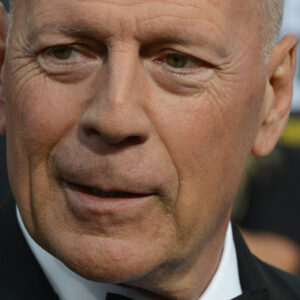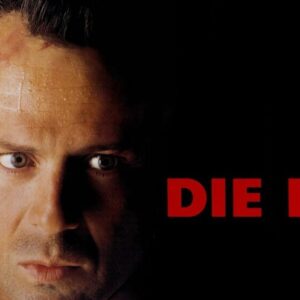Cillian Murphy is an actor whose career has been defined by his chameleonic ability to immerse himself in a variety of roles, captivating audiences and critics alike with performances that are as intense as they are nuanced. From the haunting isolation of post-apocalyptic landscapes to the morally complex streets of early 20th-century Birmingham, Murphy has carved out a space for himself in the annals of modern cinema. His journey from playing ordinary men in extraordinary circumstances to embodying psychologically intricate villains, and finally, to leading men who blur the lines between hero and antihero, offers a fascinating lens through which to explore broader trends in film.
This article will delve into Murphy’s evolution as an actor, tracing the transformation of his on-screen personas and examining how his roles mirror the shifting narratives of contemporary cinema. Through a closer look at key performances, we’ll explore how Murphy’s choices reflect and influence the industry’s approach to character development, and why he remains one of the most compelling actors of his generation.
Early Career: The Everyman and Complex Protagonist
Cillian Murphy’s early career is marked by roles that positioned him as an everyman, thrust into extraordinary circumstances. This archetype was particularly resonant in the early 2000s, a period when the world was grappling with the aftermath of 9/11. During this time, cinema reflected a collective sense of vulnerability and uncertainty, often focusing on characters who were relatable yet complex, embodying the anxieties of the era.
One of Murphy’s most defining early roles was as Jim in Danny Boyle’s 28 Days Later (2002). The film, which revitalized the zombie genre, was as much about the fragility of humanity as it was about the horror of the undead. Murphy’s portrayal of Jim, a bicycle courier who wakes up from a coma to find himself in a desolate, post-apocalyptic London, is a masterclass in vulnerability and resilience. Jim is not a traditional hero; he is an ordinary man forced into extraordinary circumstances, a character who mirrors the fears and hopes of a world recovering from real-life terror.
Murphy’s ability to convey deep emotional complexity with subtlety made him stand out in this role. His Jim is haunted, not just by the horrors he encounters, but by the very notion of survival in a world where the boundaries between humanity and monstrosity have blurred. This performance tapped into the early 2000s trend of portraying protagonists who were relatable yet profoundly impacted by their circumstances—a reflection of the societal mood post-9/11, where the lines between good and evil, safety and danger, had become disconcertingly indistinct.
Diving into Villainy: The Psychologically Complex Antagonist
As his career progressed, Murphy began to explore darker territory, taking on roles that delved into the psyche of the antagonist. This transition is epitomized by his portrayal of Dr. Jonathan Crane, also known as Scarecrow, in Christopher Nolan’s Batman Begins (2005). In this role, Murphy demonstrated his capacity to bring depth and sophistication to characters that might otherwise have been one-dimensional.
The early 2000s saw a shift in how villains were portrayed in cinema. Gone were the days of the mustache-twirling, black-and-white bad guys; in their place emerged antagonists with complex backstories, psychological depth, and often, a perverse logic to their malevolence. Murphy’s Scarecrow was not just a foil for Batman; he was a fully realized character, a psychiatrist with a penchant for exploiting fear, whose actions were driven by a twisted interpretation of his professional ethics.
Murphy’s approach to the role was both chilling and cerebral. His Scarecrow was more than just a comic book villain—he was a reflection of the post-9/11 world’s preoccupation with fear and control. The character’s use of fear as a weapon mirrored societal anxieties about the unseen forces that could be manipulated to control and terrorize. Murphy’s portrayal added a layer of psychological realism to the character, making him not just a memorable villain, but an influential one in the pantheon of cinematic antagonists.
Exploration of Identity: Gender and Androgyny
In 2005, Murphy took on one of the most challenging roles of his career, playing Patrick “Kitten” Braden, a transgender woman, in Neil Jordan’s Breakfast on Pluto. This role was significant not only for its exploration of gender identity but also for Murphy’s sensitive and nuanced portrayal of a character navigating a world that was often hostile to her very existence.
The early 2000s were a period of increasing exploration of gender fluidity and identity in cinema, with films beginning to challenge traditional norms and offer more diverse representations. Breakfast on Pluto was ahead of its time in its depiction of a transgender character who was not defined by her struggles alone, but by her resilience, charm, and indefatigable spirit. Murphy’s performance as Kitten was a testament to his range as an actor and his ability to imbue his characters with both strength and vulnerability.
Murphy approached Kitten’s character with a blend of empathy and courage, refusing to reduce her to a caricature or a stereotype. His performance highlighted the complexities of identity, particularly in a time and place where deviation from the norm was met with hostility. By embodying Kitten’s quest for love and acceptance, Murphy challenged audiences to reconsider their own preconceptions about gender, making Breakfast on Pluto a landmark film in the portrayal of LGBTQ+ characters.
The Antihero and the Rise of Gritty Narratives
One of Murphy’s most iconic roles is that of Thomas Shelby in the critically acclaimed series Peaky Blinders (2013-2022). Shelby is the quintessential antihero—a character who exists in shades of grey, navigating a world where morality is fluid and survival often necessitates ruthlessness. Murphy’s portrayal of Shelby is a study in contradictions: he is both a ruthless gang leader and a man haunted by his past, both a protector and a perpetrator of violence.
The rise of the antihero in cinema and television during the 2010s reflects a broader trend toward gritty, morally complex narratives. Audiences became increasingly drawn to characters who were flawed, who made questionable choices, yet remained compelling and even relatable. Murphy’s Shelby is a product of this trend, a character who embodies the post-modern rejection of black-and-white morality in favor of a more nuanced understanding of human behavior.
What makes Murphy’s portrayal of Shelby so compelling is the depth he brings to the character. Shelby is not just a criminal mastermind; he is a man struggling with trauma, guilt, and a desperate need for control in a world that seems intent on denying him any semblance of it. Murphy’s ability to convey this internal struggle, often with little more than a glance or a subtle shift in expression, is what elevates Shelby from a mere character to an icon of modern television.
The Evolution of Vulnerability: From Isolation to Connection
A recurring theme in Murphy’s roles is the exploration of vulnerability, particularly in narratives that oscillate between isolation and connection. In his early films, such as 28 Days Later, Murphy’s characters often find themselves in worlds stripped of connection, where survival is a solitary endeavor. However, in more recent roles, there is a noticeable shift toward characters who, despite their isolation, seek connection and community.
This evolution is perhaps best exemplified in A Quiet Place Part II (2021), where Murphy plays Emmett, a man who has lost everything and everyone he loved. Initially, Emmett is a character defined by his isolation and despair, a man who has withdrawn from the world in the face of unimaginable loss. However, over the course of the film, he begins to reconnect with others, finding new purpose in protecting those who have come to depend on him.
This shift in Murphy’s roles from isolated survivors to characters seeking connection mirrors broader societal trends. In a world that has increasingly come to value community and collective survival, particularly in the face of global crises, these themes resonate deeply with contemporary audiences. Murphy’s ability to portray characters who are both strong and vulnerable, who are defined as much by their need for others as by their individual resilience, reflects the changing dynamics of heroism in modern cinema.
Conclusion
Cillian Murphy’s on-screen evolution is a testament to his versatility and his keen understanding of the changing tides of cinema. From the vulnerable everyman of 28 Days Later to the psychologically complex villain in Batman Begins, and from the gender-fluid Kitten Braden to the morally ambiguous Thomas Shelby, Murphy has consistently chosen roles that challenge both himself and his audiences.
His characters have evolved alongside the trends of contemporary cinema, reflecting the shifting narratives of heroism, identity, and morality. Murphy’s ability to adapt to these changing roles, to bring depth and nuance to each of his characters, has cemented his place as one of the most compelling actors of his generation.
As cinema continues to evolve, so too will Murphy’s roles. Whether he’s playing a man struggling with isolation in a post-apocalyptic world, a villain who uses fear as a weapon, or an antihero navigating the gritty streets of Birmingham, one thing is certain: Cillian Murphy will continue to captivate and challenge us with his performances.
Call to Action
For those who have yet to delve into Cillian Murphy’s filmography, now is the perfect time to witness the evolution of one of modern cinema’s most talented actors. Explore his early roles, where vulnerability and resilience intertwine, and watch as he transitions into complex villains and morally ambiguous antiheroes. Pay close attention to how his characters reflect broader trends in cinema, and you’ll gain a deeper appreciation for Murphy’s craft and the subtle power of his performances





